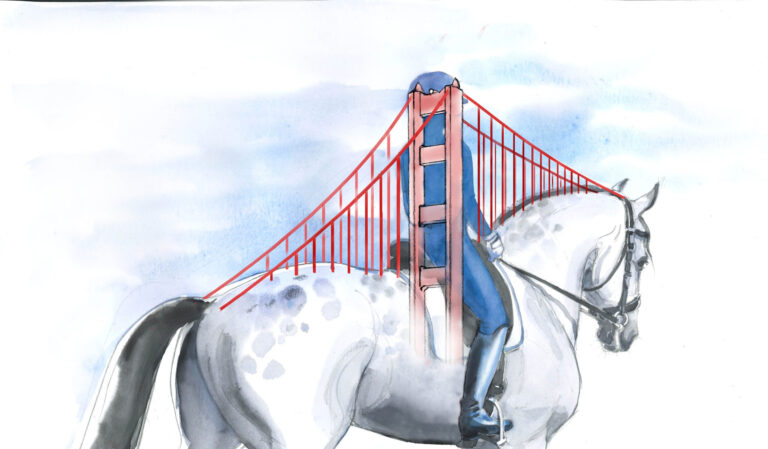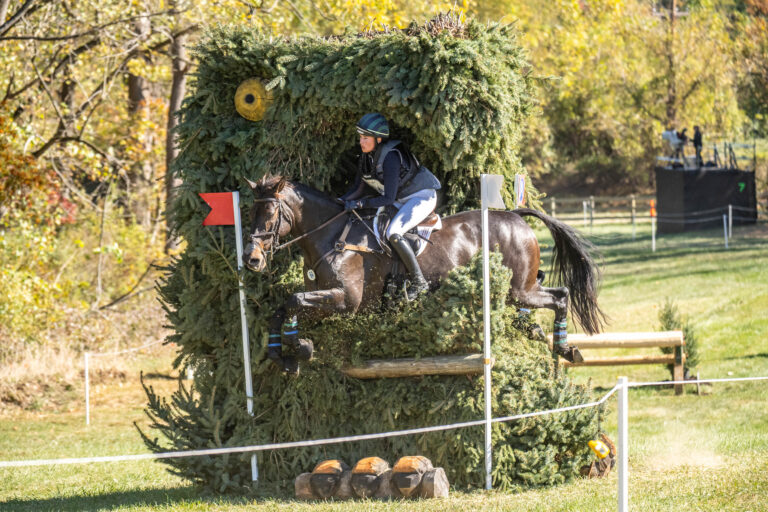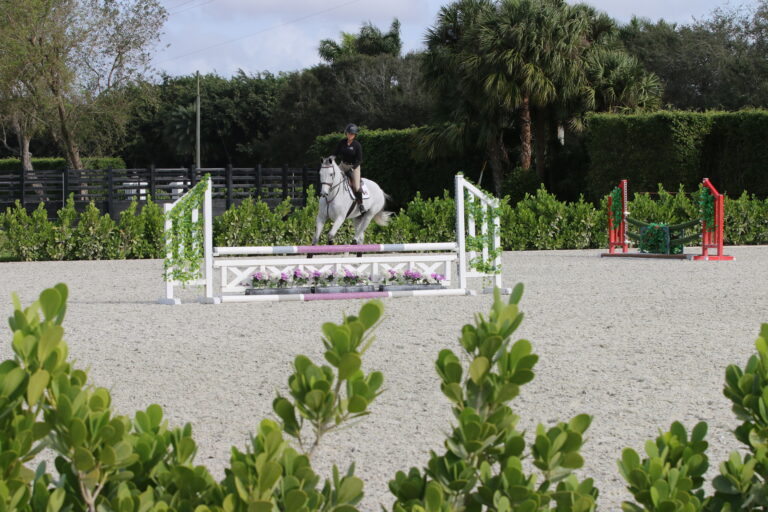Riders who attend my clinics sometimes tell me that previous instructors have told them to look into the distance, not look at the jump, when approaching a fence. In my experience, this is usually an attempt by the instructor to help a rider avoid the bad habit of looking down at the jump while her horse is in the air.
However, I don’t find this technique particularly effective at curing such a habit. And it doesn’t teach the rider the essential skill of determining the distance and estimating the necessary number of strides to the take-off spot for the jump. If you are looking out to infinity as you approach a jump, you will see an infinite number of strides and won’t be able to choose the correct stride from which your horse should take off. To determine the distance to a jump properly, you must have a fixed point of reference in your field of vision. In other words: Look at the jump.
That’s why I like my students to look at the jump during the approach. Doing this will help you learn to use your eyes to measure the distance to each fence. You focus on the jump but still avoid looking down at it or ducking in the air. As the jump disappears from view between your horse’s ears, transfer your focus to a specific object in the distance. At this point, you’re already committed to a take-off spot and no longer need to focus on the jump. For those riders who continue to look down at jumps while in the air, I stand on the landing side of a fence and hold up my hand. As the riders go over, I ask them to tell me how many fingers I’m holding up. This leaves them no choice but to look ahead!
The point of reference I tell riders to focus on varies by the shape of the jump, whatever level they are riding. Here’s where I want them to look, depending on the shape:
- the top rail of a vertical
- the front rail of a square or slightly round oxer
- the back rail of a triple bar
- the middle rail of a hogsback, which is a spread that’s highest in the center
Not sure whether a spread jump is an oxer or a triple bar? Follow this rule of thumb: If the front element is half the total height of the jump or less, treat it like a triple bar and focus on the back element. Otherwise, treat the jump as an oxer and focus on the front element.
To illustrate what I mean, we’ll look at some fences riders encountered at the Waredaca Training Level Three-Day Clinic in Laytonsville, Maryland, in fall 2004.
Tips for Natural Obstacles
What about cross-country ditches, the nemesis of many entry-level riders? They’re really just a type of spread. Approach a ditch on cross-country as if it is a triple bar, focusing on the back rail if it is revetted (framed with timbers, with a vertical on the far side) or on the bank on the far side if it’s not revetted. This will encourage your horse to reach the take-off on a forward, positive stride.
Over lower-level ditches, which can be fairly narrow, your horse should land well past the bank on the far side. A Weldon’s Wall (a ditch with a wall on the far side) is shaped like a triple bar without the middle rail, so focus on the top of the back element?the wall.
Trakehners (ditches with a log suspended above them), on the other hand, are shaped like hogsbacks, so focus on the top of the middle element?the log across the ditch.
Treat banks like verticals: Focus on the timber or revetment on the top of the bank as you approach it.
This article originally appeared in the April 2005 issue of Practical Horseman magazine. For more on how to improve your timing to fences, see “The Time of Your Life” in the June 2011 issue.











